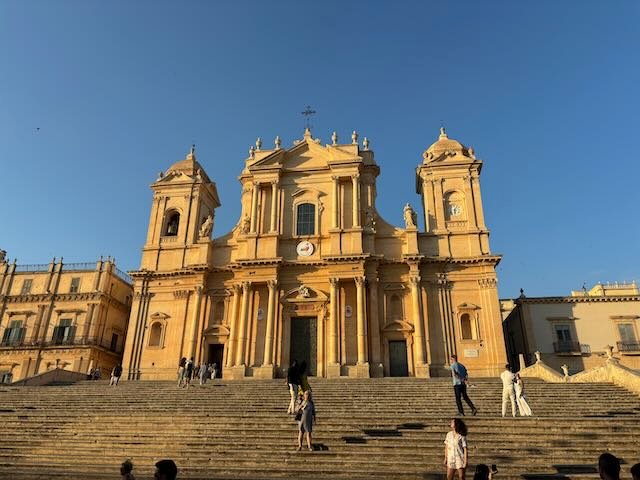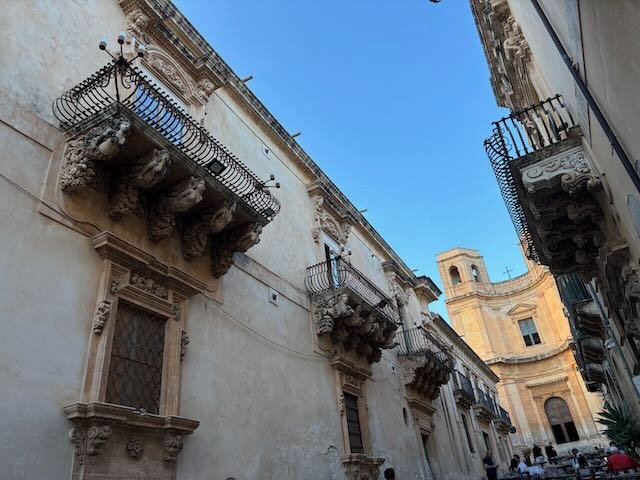Seotember 21-22. 2025. Manzara del Vallo – Agrigento
Making local connections and hearing local stories is always one of the most interesting parts of traveling. Our tour manager introduces us to a friend of us, a retired banker who loves to introduce tourists to his small town and its history. A seaside village with occasional high tides that wash down the street, our guide heralds his hometown of Mazara del Vall0 as a place of peace creating a safe place for disparate peoples throughout history: built by emigrating Tunisians there is a Kasbah of small narrow street and high walls to protect against the heat, then the Jews arrived, living in their own area but quietly integrated into the life of the town until the arrival of the Spanish Inquisition in about 1492 when the Jewish community was scattered abroad leaving behind a few traces of its century of history. Early on were the Greeks and then the Romans, while Christians put another layer on the city to create what it is today where there is still a large presence of Muslims of Tunisian ancestry who live without conflict with their fellow Christians, fishing, farming, and shopkeeping. The city decided to attract tourism and created handmade ceramic plaques on the walls in the old part of town commemorating and promoting this story of integration of culture.
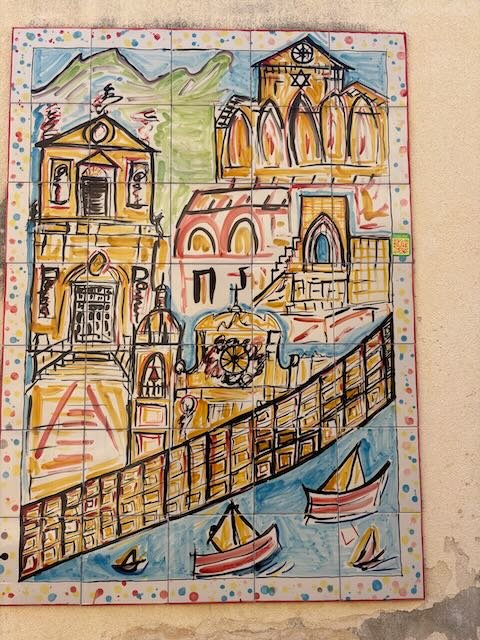
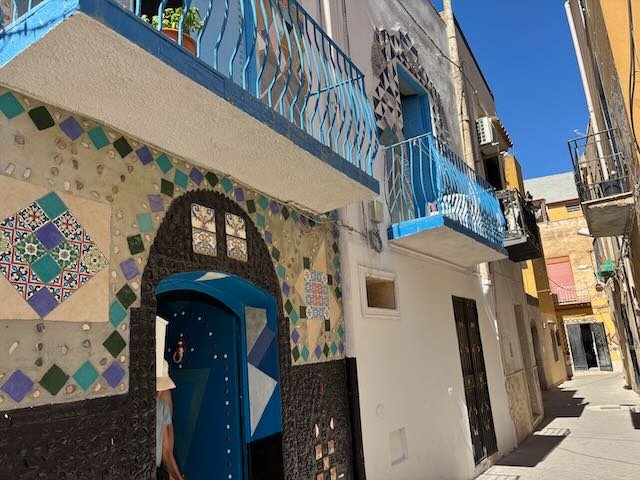
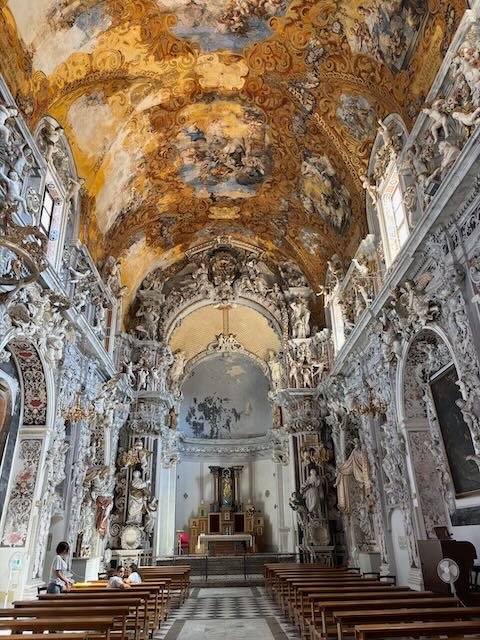
In the afternoon we relax and enjoy the warm water on a small beach outside the large town of Agrigento. Dinner in the garden of this more rural hotel with an evening view of the lit up Greek temples on the hillside which we will be visiting on the morrow.
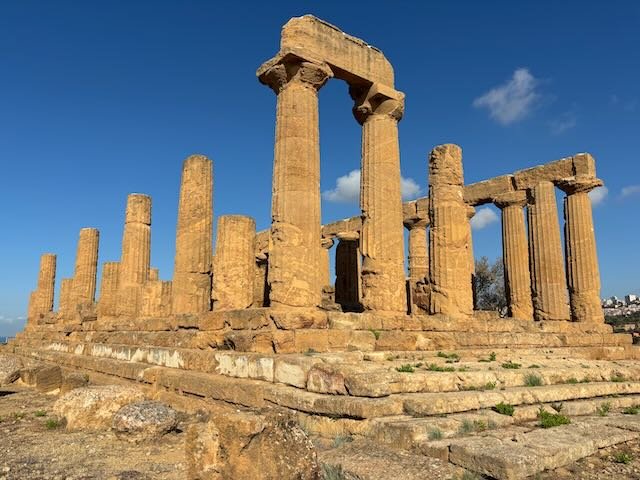
We have a world-class guide for the Valley of the Temples, who lived in England, the U.S. and France and was articulate and knowledgeable abut the remains of the 3 large Greek temples on the hillsides. The Temple of Concordia has stood intact since Hellenic times, supported over time by its partial enclosure between its doric columns when transformed into a Christian place of worship. The other main standing temples, the Temple of Hera and Temple of Hercules, have been rebuilt into their now partial standing form. This is the main tourist site in Sicily so every tourist in the area comes here and we are here early enough in the morning to have some space among the large bus groups who are also visiting. These are really impressive buildings and a symbol of the rise and fall of empires and peoples over time.
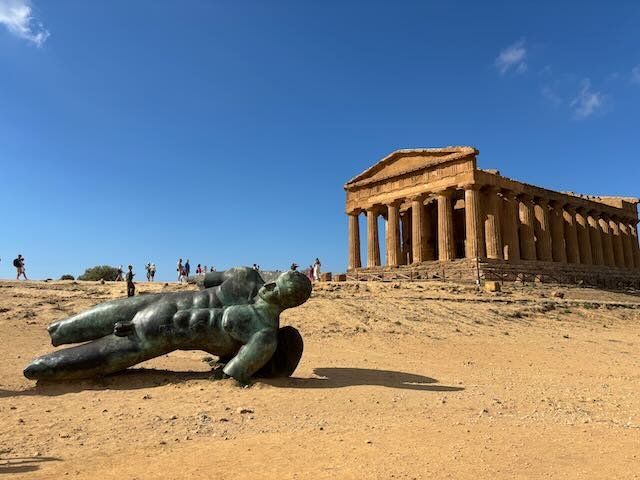
Most of the group heads off for lunch by the sea while 3 of us are dropped off at the Archeology Museum in the Valley which houses an impressive collection of Grecian vases, small ceramic heads and other artifacts found during excavations, as well as the remains of a few beautiful marble statues. Also no one is there and the guards seem non-existent. Outside the museum is a major excavation site with students continuing to work on various digs which over time have revealed an ancient community space for meetings with semi-circular seating for a large number of people. Next door to the museum is the San Nikola church, once a Greek temple, now a very austere medieval church still being used for services. Well worth visiting and almost empty of tourists.
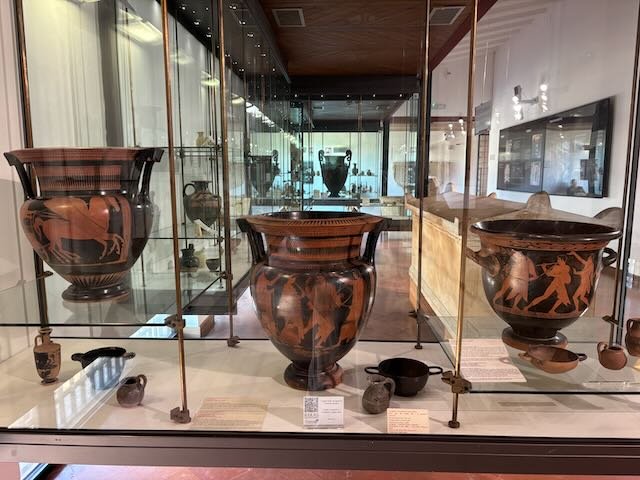
Dinner again outside in the gardens of our hotel, not the most remarkable of food, but the setting is memorable.
September 23-24, 2025. Ragusa, Modica and Noto
Visiting small Italian towns is always the best part of visiting any area of Italy. And the towns we visited today in Southern Sicily did not disappoint. Ragusa was completely destroyed by an earth quake in 1693 and a new town of Ragusa Superiore was built above it on safer ground. But some people did not want to move to a nearby area and rebuilt Ragusa Ibla on top of the ruins in the 1700’s, in Baroque style with a new large church, despite the death and destruction seen not many years before. And it in fact today it is a far more attractive place than its “safer” neighbor.
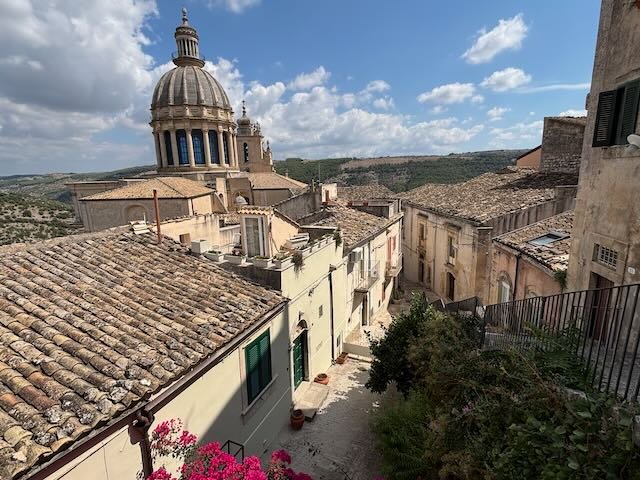
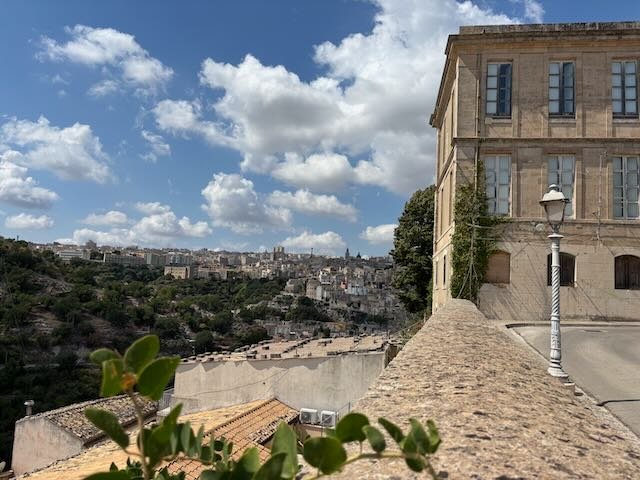
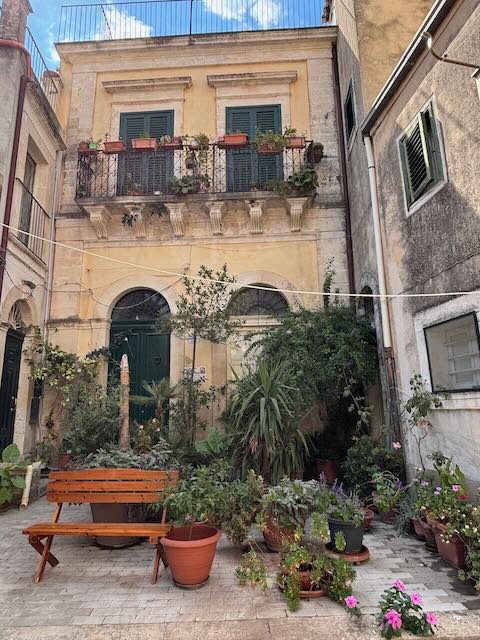
Modica is one more baroque town, this one very famous for its chocolate, originally imported from Mexico. The shop we stopped for our tasting tries to help local women’s groups and imports its cacao from Ghana – a sharp taste in its pure form but made in many flavors with 50% cacao. We were sweetly sated by the time we left, with many bars purchased to bring home.
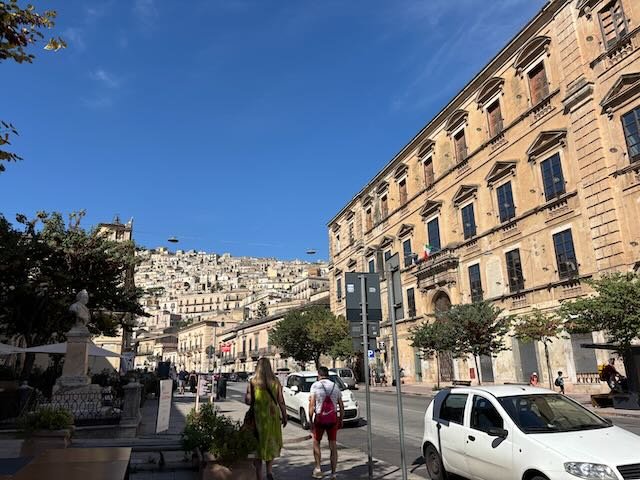
Our last stop of the day before heading for our evening in Siracusa was the well-known small town of Noto —famous because, I am told, it was featured in the second season of the serial The White Lotus, which I have never seen. Now a tourist Mecca, it is filled with small interesting stalls and shops and the city does deserve its fame as its beautiful buildings are impressive. Once a very rich city, its many monasteries and nunneries are of the highest calibre building form, substantial and imposing, its city square large and inviting.
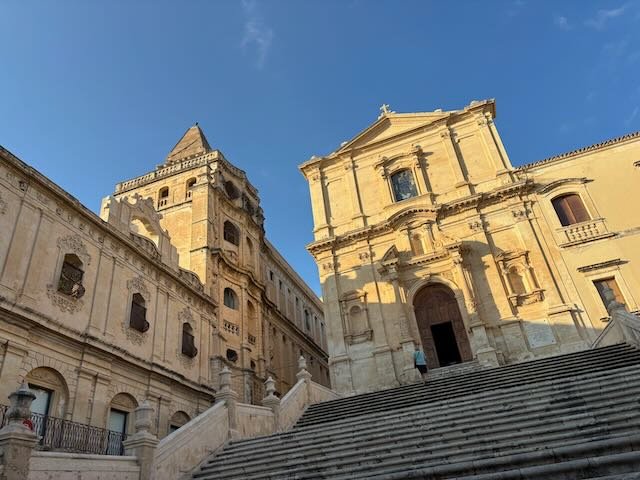
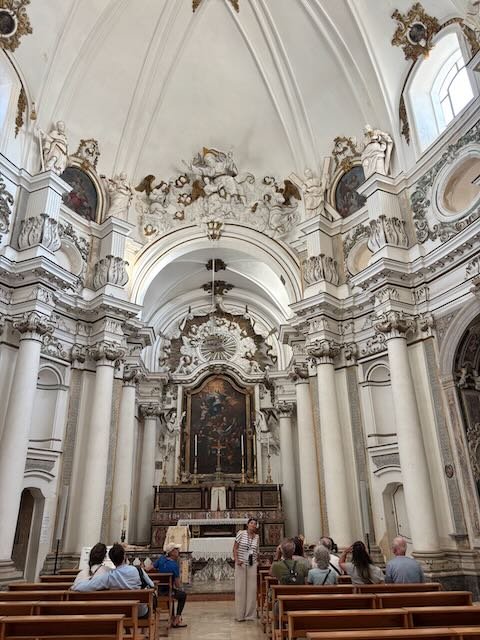
Our excellent local tour guide told us how the main street was centuries ago dug down several levels to improve its transport capabilities, requiring the transformation of many doors and staircase which then became 2 floors higher than originally designed. It is easy to see why it became a movie set and why it remains a well-loved Sicilian destination.
